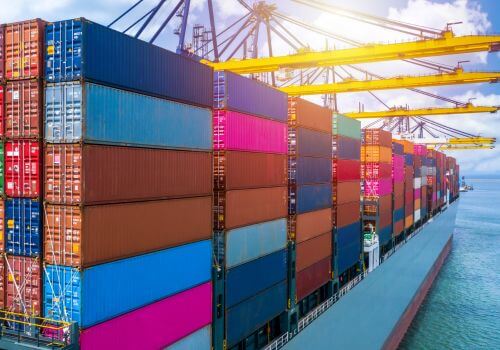What is consolidation in logistics?
Consolidation in logistics is a strategy used to combine multiple smaller shipments from various suppliers, customers, or locations into a single, larger shipment. The primary goal is to maximize the efficiency of transportation, reduce costs, and streamline the delivery process. Think of consolidation as a way to share a “ride” for goods: instead of each package traveling separately, multiple packages are grouped together to form a single shipment.
This approach is particularly useful in industries with high shipping volumes, where transportation costs and delivery efficiency are critical. Businesses ranging from e-commerce giants to small manufacturers benefit from consolidation to optimize their supply chain operations.
Why is consolidation important in modern logistics?
Transportation is one of the most significant costs in logistics. Whether goods are moved by truck, train, ship, or airplane, transportation expenses can account for up to 50% of a company’s logistics budget. Consolidation helps minimize these costs by fully utilizing the available capacity of transportation modes.
Additionally, consolidation is not just about saving money. It also plays a critical role in ensuring timely deliveries, improving supply chain efficiency, and contributing to environmental sustainability. Businesses that effectively implement consolidation can achieve a competitive edge in a global market where speed and cost-efficiency are key.
How does consolidation process look like?
Consolidation involves several steps, each requiring careful planning and execution:
1. Collection of goods:
Smaller shipments are gathered from multiple suppliers, customers, or warehouses. This collection might involve coordinating with various suppliers in different locations.
2. Sorting:
Once collected, goods are sorted based on factors such as destination, type of product, or specific delivery requirements.
3. Grouping:
Items heading to similar regions are grouped together to form a larger, consolidated shipment. This grouping might also take into account the type of transport being used.
4. Transportation:
The consolidated shipment is transported to its destination using the most suitable mode, such as a full truckload (FTL) for road transport or a container for sea freight.
5. Deconsolidation:
Upon reaching the destination, the shipment is broken down (deconsolidated), and individual packages are delivered to their final destinations.
What are the different types of consolidation in logistics?
Depending on the supply chain structure and goals, consolidation can take various forms:
Buyer consolidation
Buyers combine orders from multiple suppliers into a single shipment. This reduces the cost and complexity of receiving multiple deliveries.
Example: A retailer consolidates goods like electronics, furniture, and clothing from different suppliers into one shipment to their warehouse.
Seller consolidation
Sellers combine shipments for multiple customers going to the same destination.
Example: A manufacturer producing products for three different stores in the same city consolidates the shipments to reduce transportation costs.
Hub-and-spoke model
Goods from multiple locations are transported to a central hub, consolidated, and then shipped to their final destinations.
Example: FedEx uses this model, where packages from around the world are sent to a central hub, sorted, and sent onward.
Cross-docking
Shipments are directly transferred from one transportation mode to another without long-term storage. It is a type of consolidation focused on speed and efficiency.
Example: Goods arriving at a port are transferred directly to trucks for delivery without being stored in a warehouse.
What are the benefits/advantages of consolidation?
1. Cost savings:
Consolidating shipments allows businesses to share transportation costs. For example, shipping one full truckload (FTL) is cheaper than sending multiple partial truckloads (LTL). Shared expenses mean smaller businesses can access affordable shipping rates.
2. Environmental benefits:
Fewer trips mean fewer emissions. Consolidation contributes to green logistics by reducing the carbon footprint of transportation operations.
3. Improved efficiency:
Managing fewer shipments simplifies logistics operations. Consolidation reduces paperwork, minimizes handling errors, and streamlines the entire process.
4. Timely deliveries:
Consolidation can help optimize delivery routes, ensuring goods reach their destinations faster and with fewer disruptions.
5. Better utilization of resources:
Trucks, containers, and warehouses are used more efficiently, minimizing wasted space and maximizing value.
3 real-life examples of consolidation
To illustrate, consider these practical scenarios:
1. E-commerce retailers
An online retailer like Amazon collects orders from multiple sellers. Instead of shipping each seller’s products individually, orders are consolidated at a warehouse and sent to the customer as one package.
2. Manufacturers
An automotive company in Detroit may receive parts like engines, tires, and seats from different suppliers. These parts are consolidated at a hub before being delivered to the manufacturing plant as a single shipment.
3. Small businesses
A small clothing brand orders fabric, zippers, and buttons from various suppliers. The shipments are consolidated at a logistics hub and delivered together, saving the business shipping costs.
In summary, Consolidation in logistics is the process of combining multiple smaller shipments into one larger shipment to save transportation costs and improve efficiency.







